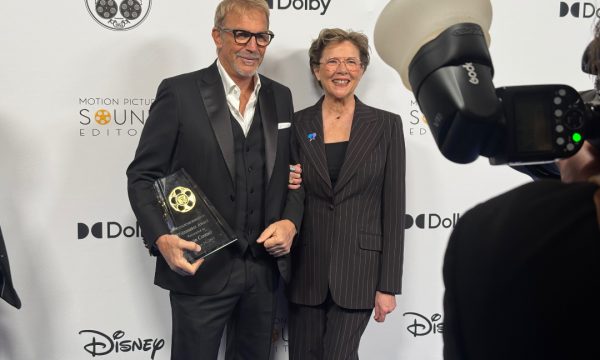Roseanne Barr posts a throwback photo on Instagram. She’s gracing a 1994 cover of Vanity Fair in a corset and lingerie. The caption reads: “When is @lizzobeeating going to thank me for paving the way.” Barr is referring to Grammy Award-winning singer Lizzo, who has served as the poster child for “Big Girls” for the past several years. She even won a Primetime Emmy Award for her Amazon reality series, “Lizzo’s Watch Out For The Big Grrrls.”
But, when Barr refers to herself as “paving the way” for the plus-size image in pop culture, it’s certainly not the same revolutionary representation as it is to normalize diversity in casting. After all, being overweight is not a gender, race or religious standing.
Is paving the way for the big girls a good thing for the future of our society? Health statistics say ‘no.’
Obesity is an epidemic and it’s not slowing down. Overweight and obesity are the fifth leading risk for global deaths, according to the World Health Organization. At least 2.8 million adults die each year as a result of being overweight or obese.*
The World Obesity Federation’s Atlas 2023 report states that over 4 billion people may be affected by obesity in 2035, compared with over 2.6 billion in 2020. This reflects an astonishing increase from 38% of the world’s population in 2020 to over 50% of the population in just fifteen years.
When the COVID-19 pandemic hit worldwide, overweight individuals and those living with diabetes and pre-existing heart / lung conditions were more susceptible to symptoms resulting in hospitalization and even death.
A global pandemic should have been the wake up call that America needed to put down the candy bar and pick up some weights. Unfortunately an increase in adult and child obesity continues to skyrocket in projected statistics in the next decade.
Somehow, celebrities like Lizzo are turning the dial backwards. Instead of promoting positive health, the commercial world is celebrating the rolls and XXL sizes. Being big is turning into the new normal, which, in turn, influences youth to exercise less and eat more so that they can look like their idols.
Corporations are in on it too. In 2019, Nike introduced plus-size mannequins to their stores sparking controversy. If the consumer is seeing that larger sizes are now the norm, then they will conform and there will be no turning back.
That is unless we begin promoting healthy living.
In the World Obesity Atlas report, Stephanie E. Ebosele poses the question: “How can we work together to build a movement to beat obesity?”
She believes that “it’s very attainable. We can do it by changing the perception of obesity from ‘me’ to ‘we’; by community efforts to promote affordable food and beverage choices… by creating a safe community that supports physical activity. We can fund obesity collectives and secure the involvement of early childcare centres, hospitals, schools, and food sales venues in the education and implementation of obesity policies. Together we can help change the perspective of obesity,” she stated.
Living in a celebrity-driven culture where stars set the trends; it’s up to them to choose the right messaging for their community and followers.
Unfortunately, when a public figure shares their weight loss journey and health transformation on social media, they are often ridiculed. Actor Anthony Anderson lost over 47 pounds and people accused him of looking ill when, in fact, he decided to make a change for the better. He wanted to avoid any more health issues. Living with Type 2 diabetes, he asked in an Instagram caption, “Did you know that people living with type 2 diabetes have an up to 4x greater risk of stroke, heart attack or cardiovascular death? Crazy, right?!”
Anderson has been spreading positive health awareness as the face of The Get Real About Diabetes campaign with Novo Nordisk.
44 year-old actress Mindy Kaling shared that she lost 40 pounds. “My doctor told me that this year I was the healthiest I’ve been in years,” she posted.
Yet, when she revealed her smaller frame, followers commented and accused her of everything from eating tapeworms to having a problem with her self-image.
The word “health” does not factor in these days. While mental health awareness is vital, so is your inner health. The problem with inclusion through representation for obesity is that “being overweight” is then given its own permanent category; a space that people strive to be a part of. There is no room for change or transformation when it’s fully accepted.
Netflix is releasing a series in July called “Survival of the Thickest,” following a woman who is described as “proudly thick.”
“If “thick” refers to bigger, I want people getting “thick” in the brain and not around the waist. Good fats for the brain such as fatty fish (salmon, mackerel), beef tallow, ghee, butter, and coconut oil are healthy for the brain and protective of dementia and Alzheimer’s Disease as we age,” Dr. Jeffrey Tucker told LATF USA.
Dr. Tucker has been in practice for over 30 years as a chiropractic expert in rehabilitation, sports medicine, nutrition, and functional exercise training.
“If being “thick” means fatter around the waist, hips, and butt, then people need to know that having even just 5% more body fat than what is ideal, especially around the gut can increase cytokines which cause inflammation in the body. Inflammation is related to all the degenerative diseases and can show up as aches, stiffness, and joint pain,” Dr. Tucker added.
He emphasizes that weight gain and thickness through building muscle is very different and can be positive for the body.
“If “thick” refers to building muscle, I think it’s smart and actionable. I challenged all my patients to gain 3 pounds of muscle this year. Gaining muscle is protective of everything as we age, especially frailty, osteoporosis (bone loss), and loss of balance. I want people 1) lifting heavy stuff (2-3 sets of 3-6 reps) at least twice a week. 2) adding plyometrics (jumping up and down 20-30 times) twice a week. 3) adding two 20-30 second all out sprints (walking, running, cycling, elliptical, row, etc.) twice a week at the end of your cardio or weight training,” said Dr. Tucker.
“If you want to be “thick” do it without being puffy, swollen, boggy, or flabby, or saggy,” Dr. Tucker said.
In 2020, influencer Callie Thorpe graced the cover of Cosmopolitan UK with the headline “This Is Healthy!” Thorpe is undeniably obese by definition.
In the article, Thorpe says that she wants “other women to feel comfortable to move their bodies, whatever their size.” Great – feel comfortable moving! But, get moving for weight loss purposes; solely for your internal health.
The article states that: Callie adheres to the body neutrality movement, which focuses on what your body can do rather than how it looks.
That’s called settling and creating your own narrative. But at what cost when people look up to you? It’s 2023 and according to Thorpe’s recent globe-trotting adventures via Instagram, she’s not moved for weight loss purposes. In fact, it appears as if she’s settled into her plus-plus-size living for the indefinite future.
And we wonder why obesity rates are climbing each year. It’s an epidemic and that epidemic has more than one spokesperson.
As long as influencers like Callie Thorpe and stars like Lizzo continue to celebrate their current body shape and “pave the way” for overweight individuals, obesity rates will continue to rise around the globe; as will the health risks that go along with it.














